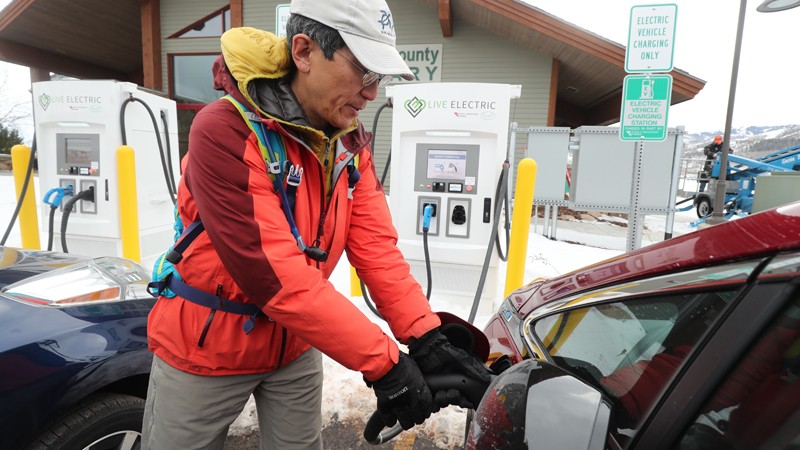Rocky Mountain Power launches full-scale effort to get more electric vehicles on Utah roads

SALT LAKE CITY — With Utah’s capital city touted the top city in America to own an electric vehicle, Rocky Mountain Power is launching a new effort to increase adoption of EVs throughout Utah, reduce vehicle emissions and improve air quality.
Rocky Mountain Power recently filed its Electric Vehicle Infrastructure Plan with the Utah Public Service Commission, which includes a $50 million investment in electric vehicle charging infrastructure for Utahns across the state.
“This plan represents the next chapter of electric vehicle infrastructure development,” said Gary Hoogeveen, Rocky Mountain Power president and CEO. “This effort will help us bolster Utah’s reputation as the nation’s leader in EV adoption while strengthening the state’s infrastructure for future growth.”
“We’re going to deploy extreme fast chargers throughout the entire state,” said Rocky Mountain Power director of Innovation and Sustainability James Campbell. “Historically, we had chargers that would take about 40 minutes of charging to get 100 miles. Now, we’re installing chargers that are three to five times faster, which means you could get those 100 miles in about 10 minutes.”
Under the plan, Rocky Mountain Power will be installing around 100 extreme fast chargers at 20-25 locations throughout the state. Electricity is cheaper than gasoline at about $1 per gallon equivalent.
“As Utah's population continues to grow, zero emission electric vehicle technology is of the utmost importance in the overall strategy of reducing emissions,” said Breathe Utah Executive Director Ashley Miller. “Breathe Utah applauds the efforts to expand the state's electric vehicle infrastructure, which provides Utahns with better access and opportunities to choose cleaner vehicle technology. The infrastructure alleviates many of the concerns people may have in choosing to purchase an electric vehicle.”
Over the past five years, Rocky Mountain Power has facilitated the installation of more than 70 DC fast chargers in Utah, completing an electric highway corridor along I-15. Additionally, more than 2,300 Level 2 chargers were installed as part of a workplace charging program.
The new effort will build on this network and significantly increase the number of chargers along the Wasatch Front and in other areas of the state. The program will also provide investment for supporting infrastructure including transformers, conduit, trenching and other necessary components.